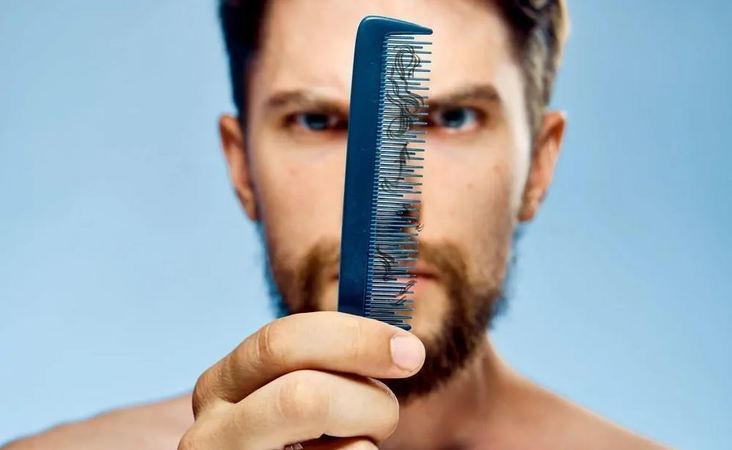Diffuse Thinning in Men: Meaning, Recovery, and Everything Else You Need to Know
- Written by Lordhair Team
- Mar 19, 2021
- |
- 9 min read
 Listen to the full text
Listen to the full textWhenever men think of hair loss, they think of alopecia or excessive strands exfoliating. Of course, they are not the only hair loss conditions out there. There are many other hair loss conditions that affect millions of men, and one such hair loss problem is diffuse thinning in males.
Diffuse thinning nearly affects 60% of men worldwide but since there's limited awareness about this hair condition, most men often don’t take timely recovery measures. So Lordhair has decided to take a role in helping them.
In this blog, Lordhair will share everything you should know about diffuse thinning in men. From meaning to signs and causes to treatments, we will discuss all important aspects. Let's learn about diffuse thinning’s meaning first!
What’s diffuse thinning?
Diffuse thinning refers to the hair loss condition where a man experiences a sudden decrease in hair density all over the scalp. Also called diffuse alopecia, it occurs when a large number of hair follicles enters the telogen phase. The telogen stage is better known as the resting period of hair strands.
Diffuse thinning occurs primarily at the temples, at the hairline (just like pattern hair loss), or in solid bald patches among males. Though this hair condition is troublesome, it is temporary in nature. However, it could also result in permanent hair loss if not treated on time.
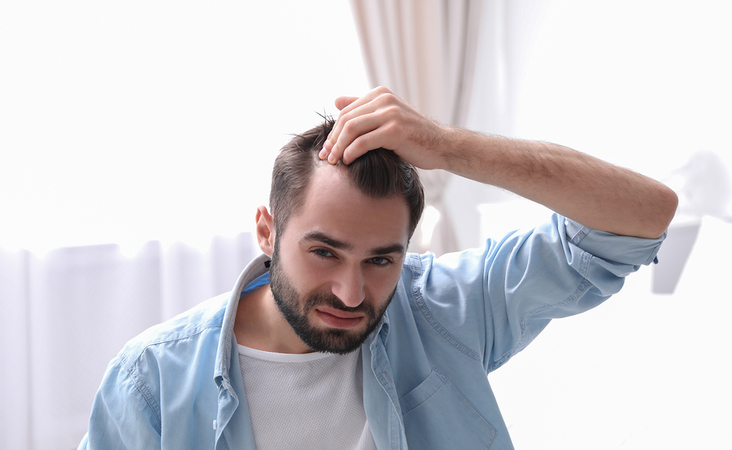
Signs of diffuse hair thinning in males
Diffuse thinning occurs slowly. Men may not notice any hair loss for months at a time. But on closer examination, they may see a difference in their hair density while looking in the mirror under a bright light or when their hair is soaked in water.
Males may face one of these signs of diffuse thinning:
- Receding hairline: As we mentioned earlier, diffuse thinning imposes an impact on the natural hairline. Some men may develop an M-shaped hairline with receding corners and a longer forelock. This is symptomatic of male pattern baldness.
- Hair clumps: Another common sign of diffuse hair thinning in males. Men may notice clumps of hair on the hairbrush, pillow, or while showering. Within 5-6 months, 30-50% of hair on their scalp may have shed.
If you are facing one or more of the aforementioned diffuse thinning symptoms, contact a dermatologist immediately.
Causes of diffuse hair thinning in males
The following are the causes of diffuse hair thinning in males:
#1 Telogen effluvium
According to scientists, telogen effluvium is the most common cause of diffuse thinning in males. It's a temporary hair condition that is triggered by trauma, shock, or excessive stress. Telogen effluvium causes hair shedding on top of the head first and the shedding spreads to other areas very quickly.
Men’s hair growth takes place in 3 different stages:
- Anagen (active hair growth phase)
- Catagen (transitional hair phase)
- Telogen (resting hair phase in which hair falls out)
Telogen effluvium increases the number of anagen hair that prematurely enters the catagen stage before immediately moving to the telogen phase. Although the hair goes back to the anagen phase once their cycle is complete, hair growth may not occur in the case of telogen effluvium.
That’s because hair follicles stay in the telogen phase for more prolonged periods or more follicles enter the telogen phase during this hair loss condition. In both cases, diffuse hair thinning will take place.
Everything about telogen effluvium hair loss and recovery using hairpieces for men.
#2 Anagen alopecia
As another popular cause of diffuse hair thinning in males. Anagen alopecia is triggered by chemotherapy. It occurs when the hair in the anagen phase is interrupted by toxic or inflammatory abuse, resulting in untimely termination of hair growth and sudden hair diffuse thinning.
Anagen alopecia may obstruct hair growth in a specific scalp area which results in a single bald patch (multiple bald patches in some cases). This diffuse thinning issue is pretty similar to telogen effluvium or hair shedding which occurs during the resting phase of the hair follicle cycle.
#3 DHT
Most men might have heard about DHT. For those who haven’t, dihydrotestosterone is a male sex hormone that is produced naturally by testosterone. An enzyme in men’s hair follicles’ sebaceous glands helps convert testosterone to DHT.
While DHT plays a crucial role in the sexual development of a male body, it also builds up in hair follicles over time which disrupts the hair growth cycle. It shrinks hair follicles and causes strands to generate at a slower rate. DHT either shrinks the growing phase or expands the resting phase.
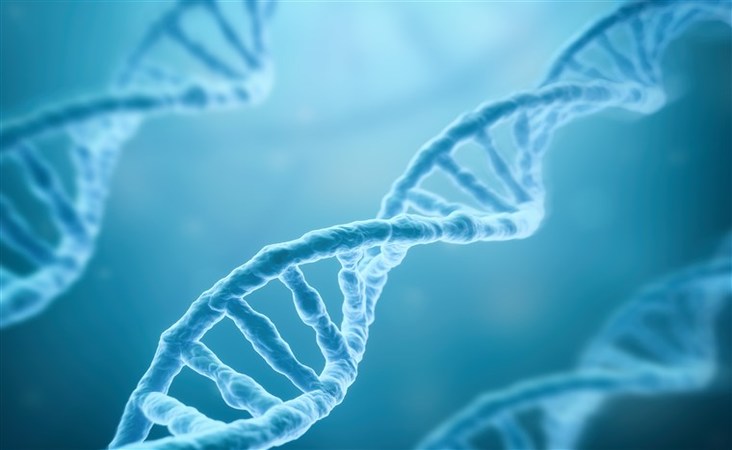
Treatments for diffuse hair thinning
As we said, diffuse hair thinning is not a permanent condition. It can be easily treated using medications and other treatment options. We recommend males to go with the following treatments in order to overcome diffuse hair thinning:
#1 Minoxidil
Minoxidil is an over-the-counter medication for diffuse thinning approved by the Food and Drug Administration (FDA). Also called Rogaine, it stimulates hair growth by pushing the follicles from the resting phase again to the anagen phase.
This medication for diffuse hair thinning works for 2 out of 3 males. However, we highly recommend men to take a prescription from a dermatologist as Minoxidil has certain side effects.
The following are the common side effects of Rogaine:
- Redness
- Scalp itching
- Dryness
- Flaking
- Scalp sensitivity
- Increased heart rate
Minoxidil side effects that have impacted men across the globe
#2 Finasteride
As one of the most famous medications used to overcome diffuse hair thinning by males. Finasteride helps men overcome receding hairline by increasing the growth of scalp hair and preventing further hair loss. It lowers the levels of DHT in the scalp which in turn reverses the hair diffuse thinning process.
However, one should be cautious while using finasteride for treating diffuse thinning as it has its share of side effects like skin rash and swelling. It can also affect your marital life by reducing sex drive.
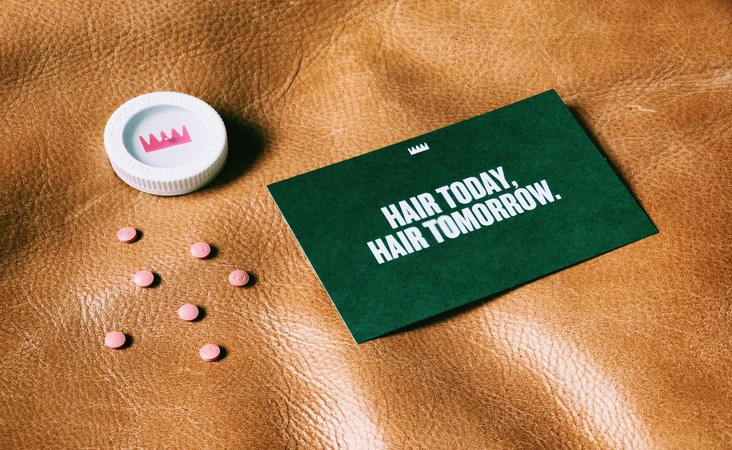
#3 Hair system
Unlike Minoxidil and finasteride, a hair system has no side effects. It’s a non-surgical solution that helps men overcome diffuse hair thinning within minutes. Also known as modern hair toupee, a hair system is created using human hair hand-woven onto a skin-friendly base that’s worn over the bald region.
If bought from a reputed supplier like Lordhair, it delivers a hyper-realistic look along with high breathability, durability, and comfort. A hair system can be attached using adhesive tape, glue, or clips. This hair recovery solution is favored by men with aggressive hair loss and a limited chance of natural hair recovery.
Check out this hair system transformation from Lordhair:
#4 DHT blocking shampoo
Another popular treatment for males to treat diffuse hair thinning! DHT blocking shampoo helps men prevent the hormone’s harmful effects on the scalp’s follicles which results in less hair shedding. It comprises hair-friendly ingredients such as ketoconazole, saw palmetto, and biotin vitamins that boost men’s hair growth.
Let the DHT-blocking shampoo sit for a few minutes on your scalp before rinsing it off with lukewarm water. Use it twice a week to overcome diffuse hair thinning.
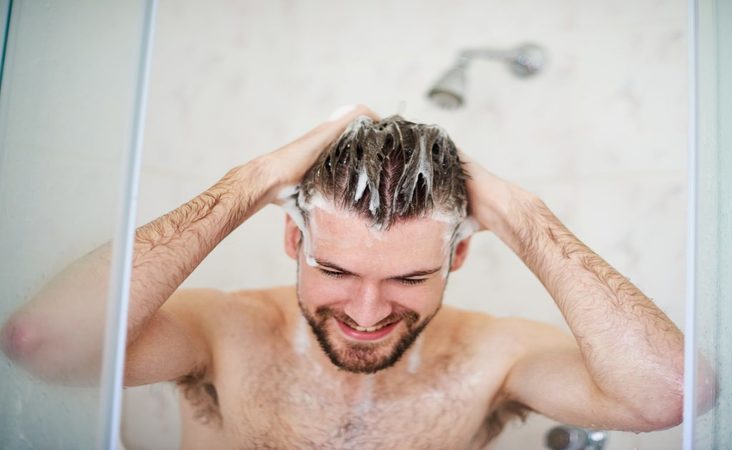
Above are the most recommended treatments for males to overcome diffuse hair thinning. Sure, some of these treatments will take some time to show results but with patience, you will definitely regain lost hair.
Our range of hair systems is a cost-effective and risk-free solution to hair loss caused by diffuse hair thinning. We strongly advise men to consult a trichologist before using any medication-based treatments to stop diffuse thinning.
Got any queries to ask? Send them to support@lordhair.com and have them answered by our hair experts!
